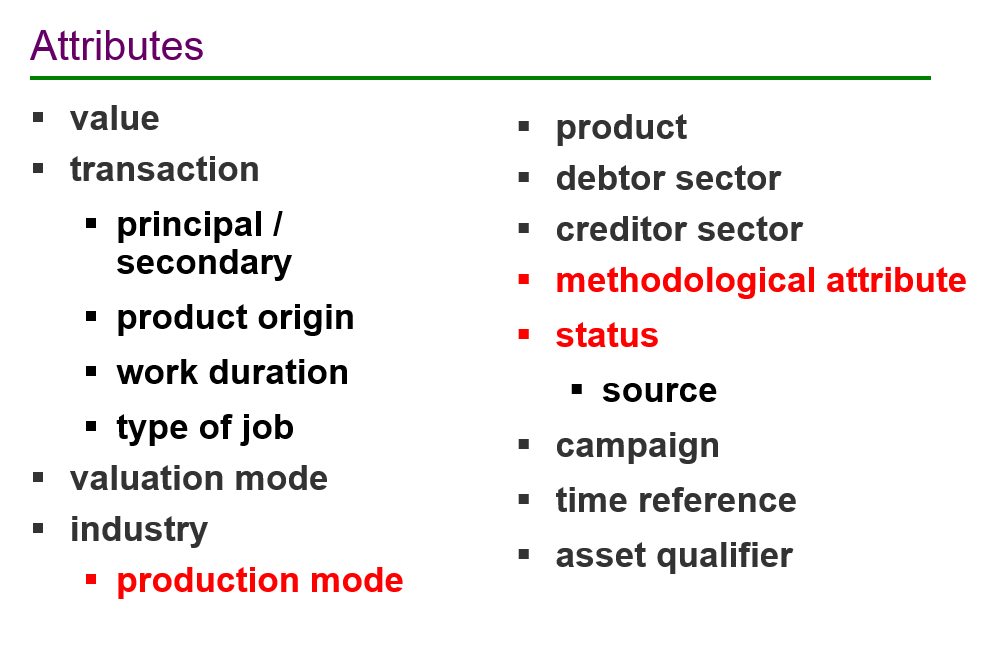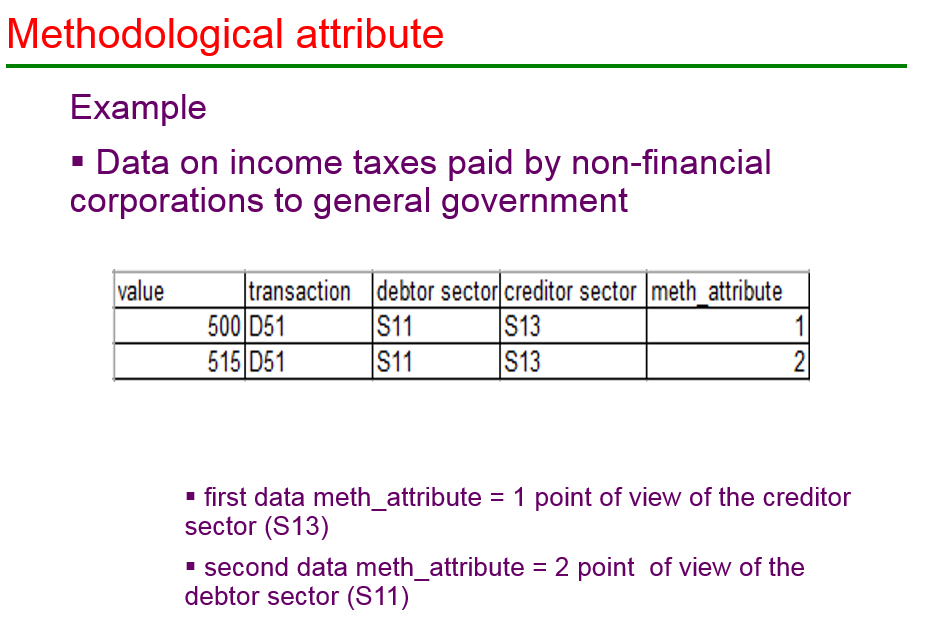ERETES database
All the data are stored in a single and consistent database from the sources to the aggregates and for the entire scope of your National Accounts.
The main advantage is to avoid any inconsistency between disjointed files (spreadsheets) or disjointed databases dedicated to goods and services accounts on one side and institutional sectors accounts on other side.
All data relevant for the national accounts are stored in the database with the same format i.e according to the same set of attributes.

The national accountants are familiars with most of these attributes:
- The standard classifications of transactions and institutional sectors are compliant with the SNA 2008 but each country may introduce additional subdivisions according to its needs.
- The classifications of industries and products are entirely user-driven but they must be articulated and organized on two levels for the first one and three levels for the second one.
- The valuation modes classification is static. It covers all the needs for the monetary values (prices of year n, prices of year n-1, combined with the criteria: basic price / producer price / purchaser price or amount on accrual basis / amount based on cash accounting). It covers also the needs for indexes (volume / price / value).
- The attribute “asset qualifier” allows to specify whether the data is a flow, a stock or one of the entries of the SNA for the other changes in assets accounts (K codes). This attribute is linked with the “time reference”: year, quarter, first or last day of the period.
Three of them are specific to ERETES:
- The production mode
- The methodological attribute
- The status of the value
The production mode was designed to help the accountants to implement the industry accounts.
A production mode aggregates units whose economic behaviour is close according (as you want) to their :
- formal or informal nature
- public or private ownership
- size
- any other criteria
The accountant builds his industry account visualizing the data of each production mode and the relative economic ratios and making adjustments mode by mode.
The methodological attribute
The structure of the database must allow to store concurrent valuations of the same flow if these valuations differ because they are the reflection of the points of view of different actors concerned by this flow, we need an attribute to specify that : it is called « methodological attribute

The status of value allows a memory of the adjustments. Many adjustments can be done on a set of data during the compiling process and it could be difficult to follow them. The status of value helps the accountant to do that.
During the first step, you enter data from statistical sources. Then you adjust them making decisions in the work tables or during reconciliation tasks focused on a transaction. Different status of value correspond to these steps, so you can keep the memory of the value in the initial source and the changes made in the other steps.